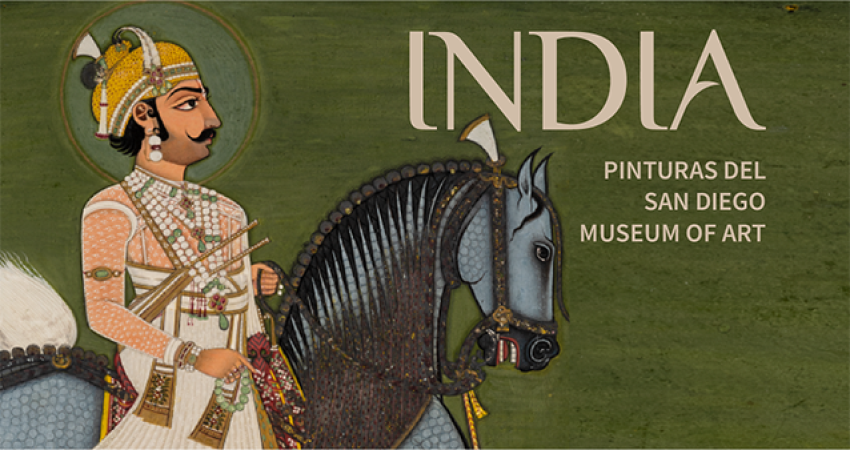Now Touring
Touring Schedule
March 23–July 16, 2023
CentroCentro (Madrid, Spain)
February 16–May 12, 2024
Speed Art Museum (Louisville, Kentucky)
The San Diego Museum of Art’s Edwin Binney 3rd Collection is one of the finest and most comprehensive collections of South Asian paintings outside of India. Numbering over 1,400 works, the collection was assembled by Edwin Binney 3rd (1925–1986), an heir to the Crayola fortune who was also interested in Persian painting, Ottoman and other Islamic art, ballet prints, and theater books. Intended to be encyclopedic in nature, it includes works from every major school from the 12th through 19th centuries, including paintings made for India’s Mughal, Deccani, Rajasthani, and Pahari courts. This exhibition brings together 84 works from the Binney Collection through two thematic narratives featuring courtly art and elephants in Indian painting: “The Throne, the Chase, and the Heart” and “The Elephant in Indian Painting.”
The Throne, the Chase, and the Heart
Most of the paintings in the Edwin Binney 3rd Collection represent courtly life in India and other parts of South Asia over four centuries in the pre-modern period. Several of the works were intended for royal albums, while some were executed on a larger scale and may have been intended for larger audiences. In both subject matter and execution, these works exhibit the splendor, power, and culture of Indian courts during the sixteenth to the nineteenth centuries, in particular those of the Mughal, Rajasthani, and Deccani kingdoms. They represent the diverse artistic traditions—Hindu, Persianate, and Islamic—cultivated in the royal workshop, which were often disseminated to other courts throughout South Asia and beyond. Organized into sections exploring the ruler’s power and authority (“The Throne”), the royal hunt (“The Chase”), and courtly and spiritual love (“The Heart”), the paintings represent the breadth of political ambitions and courtly experience across early modern India.
The Elephant in Indian Painting
In Sanskrit poetry, people and elephants live harmoniously in a shared natural world, where elephants enhance the aesthetic pleasure of the landscape by augmenting the human senses. In fact, throughout the history of South Asia, elephants were valued profoundly for their stately might, embodying royal power and inspiring comparisons to kings and deities. In the earthly realm, elephants intimidated the enemy on the battlefield, terrified the condemned as executioners, and entertained courtly audiences in staged fights with each other. Revered as the elephant-headed deity Ganesh or admired as the god Indra’s elegant white mount, elephants were also associated with rain and beautiful women. They simultaneously possessed a magnificent grandeur and quiet dignity to which all humans could aspire.
Inspired by this inherent reverence for the elephant, an appreciation rooted in India’s rich literary traditions and folklore, artists at the courts of Muslim and Hindu rulers produced splendid paintings and studies of elephants, many of which were admired in albums, and others conceived as independent compositions or as designs for transfer to other media. This exhibition features paintings and drawings of primarily Asian elephants completed in India between the sixteenth and nineteenth centuries and representing a range of regional styles, skill, and subject matter. All share a cultural affinity for the simultaneously massive yet graceful, powerful but noble elephant, its majesty captured by the empathetic hand of the artist.
Featured: Madan Murat, the elephant of Sagram Singh II (detail), India, 1725. Ink, opaque watercolor, and gold on paper. Edwin Binney 3rd Collection, 1990.622.


